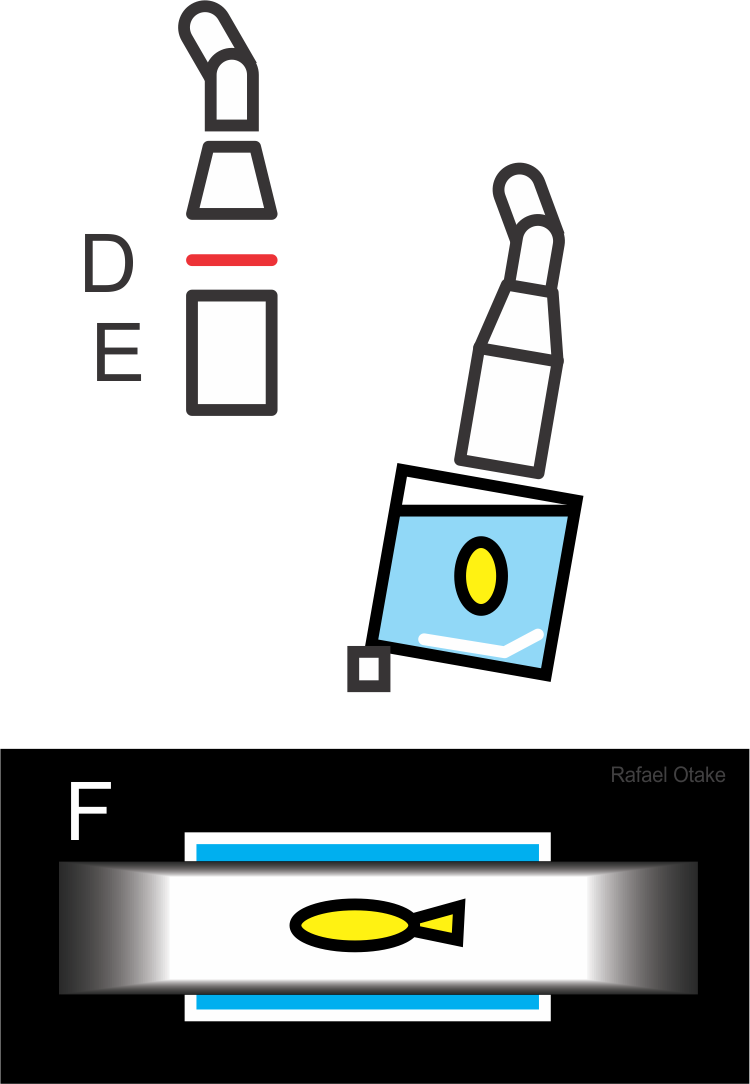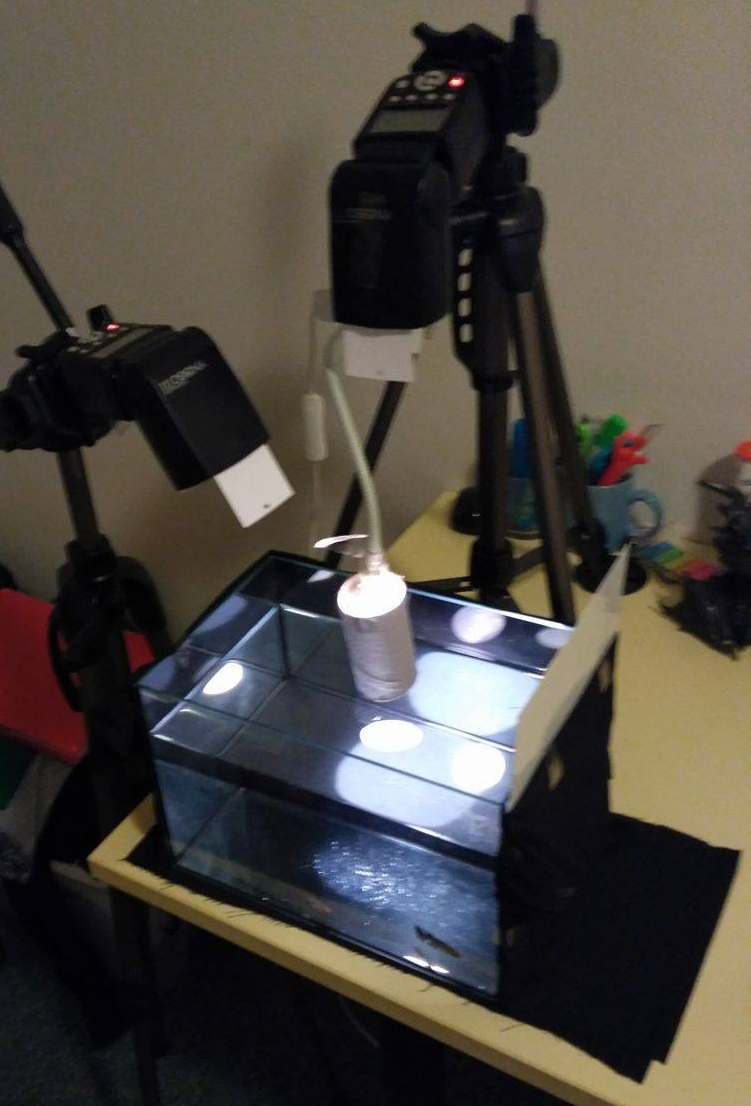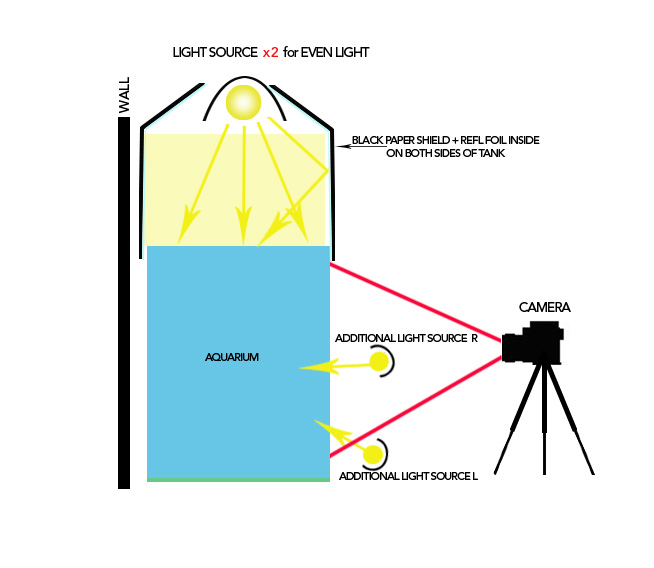Ok, let us separate this into 2 parts.
I. The inverse square law.
In this case is the relationship between your light and your first object (1) versus the light and the background (2). The background, not the rear glass of the fish tank.
But this would apply in the case you are actually illuminating the background with the same light, which in this case you are not doing.
So the basic idea is that you should put a black cloth away from the fish tank.
Top view:

II. Basic light and fish tank setup
I would first try to use only a vegetal paper on the top of the fish tank (A) and a piece of aluminum foil on the bottom (B). Actually, I think some spill on the sides can work to reduce the shadows. Try putting some white boards on the sides (C).
Lateral and top view:


Unwanted reflections or stains?
If you see some unwanted reflections I would prepare a special softbox with a grid:
Take your flash and put some distance from a sheet of vegetal paper (D) and prepare a cardboard rectangle painted in black on the inside (E).
This way you will have a soft diffused light but with a protection of some extra spill but it is important that the protection is after the diffuser.
You basically want to protect the front and the black glass, mainly to avoid illuminating some stains on the glass (F).


Put the camera away from any light so you do not reflect it on the glass.
If you see the reflection of the fish on the rear glass you could try inclining the fish tank a bit so the reflection moves away.
A grid is normally this: https://www.google.com/search?q=softbox+grid, In this case, is just simply a box of cardboard, similar to what you used on your led. The difference is that the grid goes after a diffuser.










